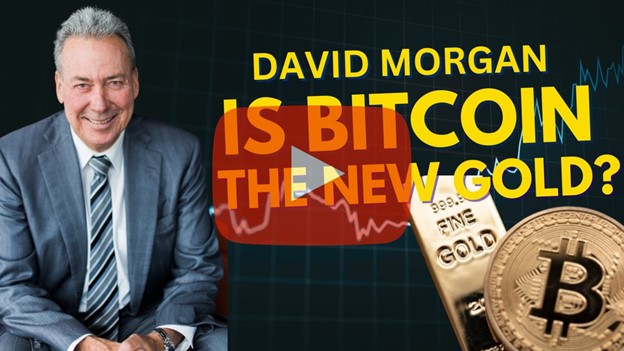Gold’s +35.2% rally this year from 2072 to an All-Time High at 2802 might be couched catalytically as geo-political discomfort were (amongst other rationale) Vice President Harris to have defeated former President Trump, in turn installing her as the so-called “Leader of the Free World” come 20 January.
Whilst we understand significant angst is now running through the StateSide media over the election, on this Side of the Pond one senses relief being broadcast not so much that he won, but rather that she did not win, a reminder that Europe would still look to the U.S. in dire times.
Regardless, last Tuesday brought the reverse result, StateSide equities getting a sensational bid, and Gold — thus “Trumped” — was dumped.
So with respect to Gold, whenever it or any major financial market reaches levels of excessive near-term — or in the case of equities long-term — overvaluation, we provably know throughout history that it “corrects”, (or in simple jargon for you WestPalmBeachers down there, it “goes down”).
And typically, the distance back down reverts to one or more of the following: a measured mean; a targeted cluster of previous price structure; a notable prior high or low; and/or a retracement as guided by the mathematics of one Leonardo Pisano detto il Fibonacci, (aka “Signore Golden Ratio“).
‘Course, in addition to the distance of adversity, the most commonly-asked question with respect to price commencing a fall is: “When?”
Here at deMeadville, astride our many years of quantitative crunching, we like to think we’re ahead of the game in anticipating such overdue price movements — be they up from undervalued or down from overvalued — the bane of that being we’re oft just too damn early by such assessment to be timely for today’s trading community. ‘Tis why, as stated on our homepage: “…deMeadville is not for the low-information, short-attention span, instant gratification crowd…”, such lost souls otherwise permeating today’s Investing Age of Stoopid.
But in due course, quantitative analyses will out upon FinMedia dissemination of a “catalyst”, following which it all goes wrong for a spell. (Indeed, some entities — as were WorldCom, Enron, Lehman, et alia — never recover).
Fortunately for Gold, it always recovers and demonstrably so since President Nixon nixed the Gold Standard back in ’71. Thus when Gold swiftly dips as it just did within a six-trading-day stint — from Halloween into the StateSide election — by careening -151 points (-5.4%), ours is not to reason why. For, (albeit a bit ahead of the curve), we’ve nonetheless been anticipating such a drop. And if you read these weekly missives, you too already know — at least quantitatively — why. Cue our Market Values chart for Gold from one year ago-to-date:

Through yesterday’s (Friday’s) settle at 2692, not only is Gold still above its smooth valuation line, but has now so been for 75 consecutive trading days: that ties for the longest “above value” streak century-to-date, the longest prior being the 75 trading days during 2019 from 23 May through 09 September. To be sure, Gold (barring a significant down day come Monday) appears poised to break that record.
As well however, Gold having recently been (on a closing basis) as high as +166 points above that smooth valuation line, ’tis now only +31 points above it. Thus we sense in fairly short order (no pun intended, especially as shorting Gold is a bad idea), that price shall break below the line, the rule of thumb then being to expect still lower levels.
“Ok, you mentioned ‘distance’, mmb, so the other usual question is ‘How low is low?’”
Squire, in reviewing downside Gold penetrations of its smooth valuation line for nearly the past five years (2019-to-date), there have been 60 such occurrences. In then measuring how low did price go within each instance’s ensuing 63 trading days (i.e. one quarter) the average adversity is -4.0%. ‘Course as we hasten to point out, “average” is hardly “reality”: but from the critical standpoint of cash management, “average” keeps us from being overly surprised by downside distance. So as a back of the napkin scribbling from here:
- Gold presently is 2692;
- It’s smooth valuation line is 2661;
- Thus a -4.0% further correction below that line would bring Gold down to 2555.
In turn, 2555 is an interesting level as ’tis near a prior minor high of 2570 (20 August) which remained in place for 15 trading days (three weeks) until 12 September. Naturally, our preference is for Gold to instead move higher still from last Thursday’s 2650 low; but we’ll respect the leading qualities of the quant-crunching upon Gold’s inevitably slipping below its smooth valuation line, (such graphic updated daily at the website).
Then, too, are Gold weekly bars which per this next year-over-year display we’ve exemplified as “perfection”. However: the current parabolic Long trend appears all but done. Had price this past week broken just five points further down under Thursday’s 2650 low, such trend would have already flipped to Short. Indeed, present price at 2692 is +42 points above the ensuing week’s “flip-to-Short” level of 2650: but Gold’s expected weekly trading range is now 75 points, (the daily alone being 39 points). Thus there’s a very realistic chance that in a week’s time we’ll herein find such trend having flipped to Short — and in concert — price also having then slipped below the aforeshown smooth valuation line. Here are the weeklies:

The good news is — even upon Gold’s weekly parabolic trend eventually flipping from Long to Short — that the prior three such Short stints (since the week ending 29 September 2023) have each been but three weeks in duration: that’s it. The intervening Long trends respectively have lasted 17 weeks, 16 weeks, and the current one now 17 weeks. Perhaps a bit too much perfection there, but as crooned Steve “The Joker” Miller back in ’73 ![]() “I get my lovin’ on the run“
“I get my lovin’ on the run“![]() and certainly for Gold, such a run ’tis been!
and certainly for Gold, such a run ’tis been!
As for the StateSide economy, ’tis been on balance rather run down, albeit the Economic Barometer has bounced and since stabilized from its August low. You tell ’em there, Jay:

‘Course the graph’s most glaring stat is the ridiculously impossible, insanely inane “live” price/earnings ratio of the S&P 500 which by “trailing 12-months earnings” (“ttm”) settled the week at 46.5x*, the S&P en route having traded above 6000 for the first time ever. (Ought we reword “The Investing Age of Stoopid” to that of the “Lobotomized”? Just a thought…).
* For fun, we also queried Assembled Inaccuracy: it replied 30.1x by “ttm”. To AI you go with your dough?
As a very close friend and business colleague wrote to us this morning: “I have no words for this market [nor] clue at this point what is going on.” Another mate at this morning’s coffee remarked: “It’s gonna go down 50%”. Did we cite means reversion above? Indeed we did. And the reason for the P/E’s relentless rise? An on-balance economic demise. Thus the earnings aren’t there, but does anyone care? As long as they beat estimates, right? Ponzi personified.
But to our point, let’s go outside the Econ Baro box. Back in 2017 when then President Trump took office, our “live” P/E of the S&P was 12% above its evolving lifetime median. Today ’tis 58% above same. Thus mathematically, earnings growth has been severely lagging the broad rise in stock prices. And through all these years, we remain mindful of the fact expressed by long-time analyst Michael Holland that — at the end of the day — stocks are valued by earnings. And they will again so be. Yet: “When?”
As to the on-balance economic demise, we decided to blow open the Baro a bit, something we’ve very rarely herein done. But as the President of the United States generally is assigned responsibly over the economy, just how did the Econ Baro comparatively do during each four-year term of the past two Presidents?
Below we’ve the four-year tracks of the Economic Barometer for President Trump (in red from Q2 2017 through Q1 2021) and for President Biden (in blue from Q2 2021 extended through Q1 2025). Whilst we never reveal the proprietary math of the Baro, ’tis been adjusted such that both tracks begin at the same level and are identically scaled. Certainly the two tracks are on-balance in net decline from where they began, and both (flat-lining the blue track from today) also look to end up at the same level as each other. Et voilà, the declining “Prez Baro” and therefore the reason why underlying earnings are not keeping pace with price:

‘Course, we know Gold looks to keep pace as does the Dollar debase. Quickly doing the math per the opening Gold Scoreboard, today at 2692, the yellow metal is priced -28% below its Dollar debasement value of 3739. Still as noted, our near-term analyses look for price to ease. And in turning to our two-panel graphic of Gold’s daily bars from three months ago-to-date on the left and 10-day Market Profile on the right, you may sense similar negativity. The baby blue dots of trend consistency are at present freely falling: upon a blue dot eclipsing below the 0% axis, the regression trend shall have rotated from positive to negative. Meanwhile per the Profile — key volume-dominant overhead resistors as labeled — the last nearby bastion of support is shown as 2674:

And ever so similar is the same construct for Silver, her “Baby Blues” (at left) just about to go sub-0%, whilst price by her Profile (at right) seeks support in the nested 31.85-31.25 area. You may also have noted earlier in the graphic of Gold’s weekly bars that the Gold/Silver ratio — which just 14 trading days ago was 78.8x — has since sprung up to now 85.7x as Silver again suffers the scourge of sinking more swiftly than Gold. Across that brief stint, the white metal has dropped -11%. Poor ol’ Sister Silver!

Trumped if not dumped, in sum, we analytically expect both Gold and Silver to weather this near-term dip. Either way, your key with them clearly is to maintain a Presidential grip!

Cheers!
…m…
www.TheGoldUpdate.com
www.deMeadville.com
and now on “X”: @deMeadvillePro
Read the full article here












Leave a Reply